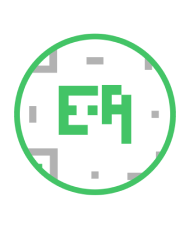Podcasts are an excellent way to reach out and connect with your audience, build trust, and stay on top of industry trends. They can be inexpensive to produce, but it’s not always easy to get started if you’re new to this medium.
Podcasts are usually between 20 minutes to an hour in length, so it doesn’t take long for listeners to get the information they need. Podcasts are also great for people who want to be informed on a particular topic or stay up-to-date on current events in the world.
In this post, we will cover five quick steps that will get you started on your first podcast:
Step 1: Choose your topic
Podcasts are all about the content, and it’s essential to choose a topic that you’re passionate about and can speak knowledgeably on. Podcasting is personal, so be sure to connect with your listeners through topics that reflect your expertise and interests.
Podcasts can cover any number of topics: business, academia, personal growth, storytelling, and comedy, to name a few. Also, think about who your niche audience will be, such as new mothers or entrepreneurs who are more successful because they have the opportunity to share their stories and connect with people who live similar lives.
Now that you have selected the type of podcast you want to create, it is time to name your podcast.
Podcasts with unique names are more memorable and help build your brand, leading to listeners turning into followers or even customers.
Having a hard time finding a name for your podcast? Try these online generators to help boost your creativity:
PRO TIP! Podcast artwork is essential. Podcast artwork helps your podcast stand out in the crowded podcasting space and might prompt a listener to download or check out your Podcast from Apple Podcasts, Google Play Music, Stitcher Radio, or another platform.
Podcast artwork is most commonly an image file with the exact dimensions as a Podcast cover art template. Podcast artwork uploads as an image file to your podcast hosting account. Are you looking for help in designing your podcast artwork? Click here.
Step 2: Choose your tools
To podcast, you’ll need a microphone and some recording software. Your computer should come with both of these built-in features. Purchasing podcast equipment is an area where you can spend as little or as much money as you want, depending on your needs.
If possible, you may want to consider a podcast microphone because it will sound better and allow listeners to hear your words more clearly. Don’t forget that wearing headphones will help you to listen to your voice while recording.
What equipment is needed to start a podcast?
- Podcast Microphone
- Recording software
Podcast Microphone
Podcasting is an audio-only medium and requires high levels of fidelity to sound good, so starting with great microphones can make all the difference. If you’re on a budget, your computer’s built-in microphone will work for now, but it won’t sound as good. Podcasting microphones come at various designs and prices, so take time to find the right one that works well with your budget.
Consider whether or not you can buy a microphone with your budget before purchasing one secondhand – if you’re able to invest in new gear, finding an affordable microphone will be a lot easier.
Here are a few podcast microphones that you may want to consider:
This is great for someone who wants an inexpensive, entry-level mic or as a backup if your main one fails on you.
This is a popular choice for those who want an uncolored sound, and it’s also a very affordable option that most any podcaster can afford to have on hand as a backup or when they’re starting.
If you’re podcasting for a living and need to sound professional, this is the mic that’s going to make your life easier.
A step up from the 2020 USB model without having all of its more expensive counterpart features, it provides a superb value with many of the features that podcasters need.
This is a good choice for those looking to spend less than $200, but it’s not quite as popular because of its lack of coloration and other sound issues.
This is an excellent option for those who want everything they need to start podcasting right out of the gate and don’t mind paying more upfront than you would if you were purchasing these items separately.
Recording software
Your computer will come with some recording software, but you’ll want to upgrade if you’re doing this regularly. Podcast recording software will allow you to edit your episodes after the recording. It will have auto-leveling, which means that it’ll adjust the volume of different parts of every episode, so nothing is louder than anything else and often has some other features depending on what you need.
Here are some podcast software options to consider:
This is a good option if you’re on a very tight budget because it’s free to download and use for as long as you like (although there are some limitations). The downside is that it’s not very user-friendly and doesn’t have all the features you’ll need if you’re regularly podcasting.
It has all of the features that podcasters want, but it’s not available on Windows, which is a deal-breaker for some people. Podcasting isn’t always about being fancy, though, and if your podcast doesn’t require high-quality editing or sound processing, this might be enough to start.
This is an excellent option for those just starting who don’t want to spend the money on Adobe Audition. It’s easy to use, powerful and it has everything that you’ll need in this price range.
This is a popular choice among professionals, and it’s the most powerful podcasting software on the market. Podcasts will sound just as good with Audition as they would if you were recording them in the studio, but there are some drawbacks – for starters, this software can be expensive if you don’t already have a creative suite subscription.
Step 3: Recording process
The recording process is pretty straightforward and is recorded in two ways: live or prerecorded.
Prerecorded
If you want to record your episodes ahead of time, then it’s a good idea to schedule them in advance. Podcasting is different from other media types because listeners can download an episode and listen at their convenience, so there’s no need for the pressure of a live recording (although many podcast hosts prefer this type).
This is also a good option if you have limited resources and can’t afford to pay for studio time or would rather not.
The guests on your podcast will need to record in a quiet place such as a home office or work office. Podcasting is different than other types of media because it relies heavily on the voice. If someone talks too low, they’ll sound unnatural, which means people recording their podcasts from home might want to invest in an audio interface/mic for better sound quality.
Guests can record via Skype, Google Hangouts, Microsoft Teams, or any other medium you agree upon if they’re not in the same area, but this is where the audio interface can come in handy if you’re still having trouble with sound quality.
Record Podcast Live
Live podcasting is best when done in front of an audience, although some podcasters prefer this because they feel more natural. This type requires the appropriate equipment on hand and a clear studio to keep sound levels from being distorted.
Podcasting software will often have a live recording feature used when you’re playing your podcast online or want an audio file of the episode for offline listening.
Here are some considerations when recording episodes
Location and environment
If you’re recording at home or in an office, your room must be soundproof because otherwise, any background noise could make it hard for listeners to hear what is being said. A soundproof room, noise-canceling headphones, and a carpeted floor are all crucial considerations.
For example, using soundproof curtains will help. You’ll want to cover up any open window with a thick sound-blocking curtain. This will prevent outside noise from making it into your room and creating echoes that make it difficult for listeners to hear what’s being said on the podcast.
You can also cover the walls with acoustic foam panels. This will make it less likely that sound from your podcasting session will be heard outside your room.
Voice
Speaking in a Podcast is different from the way you’ll talk when talking to someone. It would be best if you avoided long pauses, dramatic changes in volume and tonality, or sudden bursts of laughter because it will distract listeners instead of helping them stay engaged.
Recording level
This refers to how loudly your voice sounds on the recording, and you must get this right. Podcasts can be listened to at various volumes, so you need to make sure that your voice doesn’t sound too loud when it’s played in the background.
Step 4: The editing process
Podcast editing is a whole other world that is more complicated than you might expect, but it doesn’t need to be strenuous. Podcast editing software will have an in-built editor, so if you want to do everything yourself, this option is for you. You’ll still need some experience and know-how, though, because the process can get tricky depending upon what you want to do.
The other option is to hire a Podcast Editing Service. They’ll charge you for their time and expertise, so it’s up to you whether this expense is worth it or not, but they can make your podcast sound like a professional media station without any effort on your part.
Podcast Editing Workflow
The first step to editing your podcast is to open your editing software and import your audio file. You’ll have access to a wide range of features that will allow you to edit out any gaps or unwanted noises as well as add music, sound effects, and other enhancements. Essential editing steps include trimming, adding fades or crossfades to clips, normalizing audio levels, and applying compression.
PRO TIP! If you add Podcast music to your podcast, make sure that it doesn’t drown out the voices or sounds. Interactive Podcasts can get away with this because they want their listeners to be “immersed,” but for more passive Podcasts in which people listen on their own time, it’s better to add music in the intro and outro of the episode.
Not sure where to find music to add to your podcast? Check out YouTube Audio Library. It has a vast selection of Podcast-appropriate music that you can download for free.
After you’re finished making changes (and before exporting), you’ll want to do a little quality control. This means listening back to the edited audio file and making sure that it sounds okay on your computer’s speakers before exporting the final product.
Exporting Podcasts
The process of exporting podcasts will depend upon what software program you’re using, but there are some critical steps in common. You’ll want to export the podcast at a quality level that is high enough so listeners will be able to enjoy it. Podcasts are exported as an MPP file, and you’ll find many programs with presets for this type of file already set up.
Once your final product is exported, you’ll need somewhere to host your podcast. Podcast hosting sites offer storage space and bandwidth so you can make your podcast available to listeners.
Step 5: Hosting and sharing
Once you have your podcast edited and exported, it’s time to upload it. You can find podcast hosting sites in various places, including Apple Podcasts, Podbean, Buzzsprout, or Libsyn, so search for one that suits your needs the best.
Podcast hosting sites will offer a free option, but the downside is that you’ll be limited to less storage space and bandwidth. This means your podcast might take longer for listeners to download, or they may need to wait until it’s finished downloading to avoid cutting off any sections of audio.
Here are some podcast hosting options:
Podcasts can be downloaded in the Podbean app and through Podcast directories such as iTunes. Podbean podcasts can be embedded on any web page. Podbean podcast player has a Podcast search feature and a Podcast directory and also offers analytics and advertising.
Pricing plan: free plan with limited storage, paid plans starting from $9 / month with unlimited storage.
Buzzsprout Podcast Player allows for embedding podcasts on other web pages with an HTML code to make them visible to listeners who want to download podcasts on their phones. Podcast episodes are available for download or streaming on various Podcast directories, including Apple Podcasts, Google Play Music, Stitcher Radio, Spotify, and TuneIn.
Pricing plan: limited free plan for 90 days. Paid plans start at $12 / month for 3 hours upload.
Podcast hosting with a wide range of features, including exporting Podcast episodes as an MPP file that can play in streaming services such as YouTube. Libsyn Podcast Player allows Podcasts to embed on any web page. Podcasts download as Podcast-ready MPP files, and a variety of Podcast directories are available. Libsyn Podcasts can also be embedded on third-party websites.
Pricing plan: Starting from $5 per month with 50 MB monthly storage.
Many of the above hosting platforms allow for submitting your podcast to different directories such as Apple, Google, and Spotify, enabling podcasts to be more easily found and downloaded.
Promotion Tips
Podcasting is one of the most popular forms of online audio today so promoting them on Facebook, Twitter, and LinkedIn can go a long way when it comes to driving traffic.
Podcasts can also be embedded on your website and shared through email marketing campaigns. This is an easy way for people who don’t use Podcasting apps or directories such as Apple Podcasts to download podcasts.
Here are some tips for promoting your new podcast:
- Include an audio player with your Podcast episodes on email newsletters or in the footer of blog posts so listeners will have easy access to listening back if they want to re-listen to Podcasts. Also, create a dedicated podcast webpage on your website and embed your podcast episodes using the Podcast widget from your hosting provider.
- Podcast hosting directories provide Podcast statistics to understand better how many people are listening and which Podcast episodes might not be popular among listeners.
- Promote your podcast through social media by tagging popular podcast accounts in tweets and Facebook posts about Podcast episodes or sharing them with friends who might be interested in podcasts, especially if they enjoy the same type of content as you do.
- Purchase ads on these Podcast directories, so your podcast will show up when a user searches the guide, or use Google Ads (to reach Podcast listeners on Google) to promote Podcasts.
- Podcasts have become more popular. Podcast directories such as iTunes have made it easier to find Podcasts based on specific categories or topics.
- Video marketing is also an excellent way for people who don’t know how to listen to your podcast on iTunes (or other directories) by watching its video and then downloading it.
If you’re interested in starting a podcast, we hope this guide has given you some insights into the process. But before getting started, it’s important to note that there is no one-size-fits-all approach to making podcasts.
Podcasting is constantly evolving, and new platforms are created for people who want to share their stories or talk about different topics with listeners worldwide.
Lunara Digital can help make sure your content sounds great on any platform by providing professional production services. Have questions? Reach out to us here!


